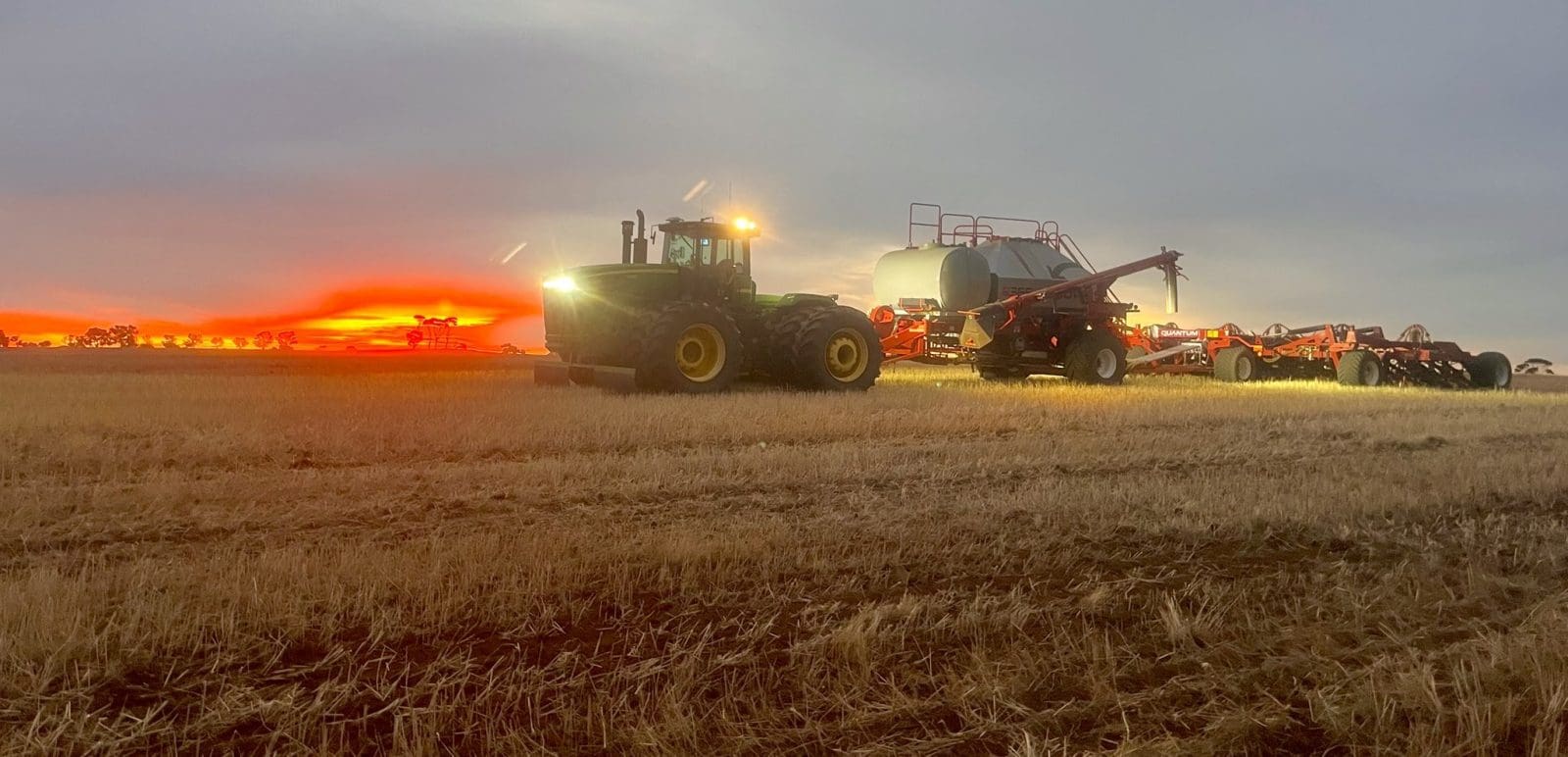
Sowing at Wagin this week, where the program is moving from barley to wheat as the last crop to go in. Photo: Glen Thompson
PLANTING of Western Australia’s winter crop is near the halfway mark amid less-than-ideal conditions in most areas, according to the Grain Industry Association of WA’s May report.
Released publicly today, the report has trimmed estimated area of the crop to 8,468,000ha, down 1.5 percent from the initial forecast released last month of 8,595,000ha.
“Soil-moisture profiles are historically very dry this year and the light falls of rain are either being sucked up like a sponge or are evaporating before it soaks in,” report author Michael Lamond said in the report.
“Most regions have planted more than 50 percent of the intended area and are continuing to plant dry.
“Without rain in the next two weeks, the northern and eastern regions will pull back on intended plantings and drop paddocks out to fallow.
“This could reduce the planted area in the state by several hundred thousand hectares, and the estimated planted area in this report reflects that outcome.”
Mr Lamond said the planted area estimate could increase by a similar margin if decent rains fall in the next fortnight.
Brighter in south
The GIWA report said sporadic bursts of rain from storms last week and around Anzac Day have germinated dry-sown crops in WA’s south, some areas in the central regions, and strips of country in the north-east, while the northern and central-western cropping regions have largely missed out.
“The rainfall that did occur was driven by thunderstorms rather than cold fronts and consequently was brilliant for some and simply a nuisance for others.”
Mr Lamond said growers that received small amounts of rain on country holding little subsoil moisture now face the risk of a “false break” unless there is follow-up rain soon.
“Where there were heavier falls, particularly where the moisture was able to meet up with subsoil moisture, crops will be okay for the time being.”

Mr Lamond said persistent warm conditions are of concern and, while still fairly early in the season and with plenty of time for rains to come, and growers are “increasingly nervous” about the upcoming grain-growing season.
“A warm winter can produce a record crop as was the case in 2022, although in that year there was good early moisture in the profile to start the season off, together with a long, soft finish.”
GIWA estimates canola area will be down from 2023 because growers have held back sowing paddocks due to the dry conditions, and it is now close to being too late for these to go in.
The lupin area is unlikely to be up from 2023 also due to the dry conditions.
Oat area is expected to increase from 2023, particularly in lower-rainfall regions where there was early rain.
“The wheat and barley swap in area could still vary depending on what happens with rainfall in the next three weeks.”
Source: GIWA
Further detail on crop conditions in individual WA port zones can be found as part of the full report on the GIWA website.

HAVE YOUR SAY